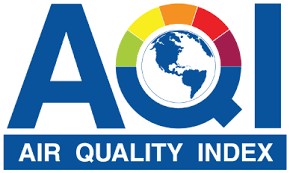 This is part 2.
This is part 2.
Click on the links below
for the other parts.
In the first part of this blog on AQI I finished with the definition of the US EPA AQI, which has 6 quality levels and AQI numbers of to 500. Before going to Europe, let us begin this part with the Chinese AQI.
5. The PRC Chinese AQI
China uses for defining air quality the same 6 pollutants as does the US EPA (see here): O3, NO2, PM10 and PM2.5, CO and SO2. It also uses 6 quality levels albeit with different wording: EXCELLENT to SEVERELY POLLUTED. The Chinese sub-AQI’s (called IAQI = individual AQI) run from 0 to 500, as do the EPA sub-AQI’s. And the highest IAQI defines the published AQI. Most of the times PM2.5 is the primary pollutant with the highest IAQI, but during summer time O3 may have the highest IAQI.
The break-points for PM’s differ from those of EPA (link, attention: this blog has a completely wrong table comparing US and China other AQI’s):
The qualifiers (“Description”) in this table are the Chinese ones, and obviously China is much more tolerant for PM2.5 as is the EPA (notice that the first Chinese break-points are considerably higher). The same remark holds for some of the other pollutants as shown in this comparison table which uses 1996 EPA break-points (link):
First one should note that China uses ug/m3 as concentration unit. Second it calculates NO2 pollution only using a 24h average, whereas EPA uses 1h values, which makes comparison impossible. Third where comparison can be made, the break-point numbers are very close for O3, CO and PM10 but differ for SO2 (24h), NO2 (24h) and PM2.5 (24h).
Chinese AQI’s are often calculated as the average from readings of multiple stations around a city, whereas US EPA AQI’s allways come from a single station.
The US Embassies in China have their own measuring stations which use the EPA standard: see here.
There are a couple of smartphone apps to visualize real-time Chinese AQI’s, but I did not find an official Chinese live map on the web based on Chinese AQI standards. The waqi.info web site shows Chinese air quality using EPA standards; the same holds for the website aqicn.org.
The next picture shows the situation today 21 May 2018 at 14:10 UTC:
Clicking on a label gives more information, as for instance for the City of Yulin:
We see that PM2.5 and PM10 situation is particularly bad, whereas O3 and NO2 levels are GOOD.
Comparing AQI’s over China with those of other parts of the world clearly shows that bad air quality (mostly PM’s) is a serious issue in many parts of mainland China.
Conclusion:
Be careful when reading AQI’s for China, as often it is not clear on what standard they are based. The following paragraph (link) summarizes this well:





May 21, 2018 at 15:23 |
[…] global change and climate measurements « EU: no CO2 improvement in cars in 2017 AQI: air quality confusion (2) […]
May 23, 2018 at 16:14 |
[…] A weblog on climate, global change and climate measurements « AQI: air quality confusion (2) […]
May 23, 2018 at 16:14 |
[…] A weblog on climate, global change and climate measurements « AQI: air quality confusion (2) […]
May 27, 2018 at 16:59 |
[…] 1, 2, […]
May 29, 2018 at 13:20 |
[…] 1, 2, 3, […]